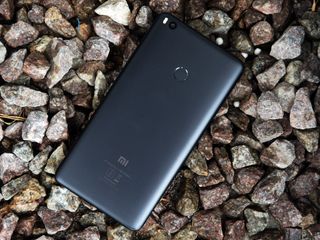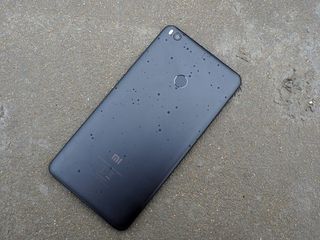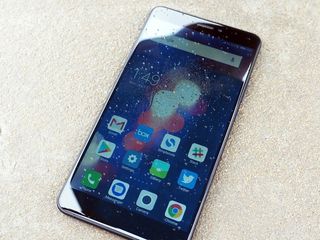Xiaomi Mi Max 2 review: Bigger is better

Last year's Mi Max was Xiaomi's first attempt at a phone with a screen size over 6 inches. The phone wasn't the company's first phablet, however, with the 5.7-inch Mi Note making its debut back in 2015. While the Mi Note was a flagship device, the Mi Max was targeted at the budget segment and primarily catered to those looking to consume multimedia on the go.
And the plan worked — Xiaomi sold over 3 million units of the Mi Max over the course of the last year. To understand why there's a market for a device that's almost the size of a tablet, you need to know that for millions of Indians, a phone is their primary gateway to the internet. As such, customers tend to prefer a device with a large screen, sort of a portable all-in-one that allows them to watch videos and movies, play games, and read books on the go.
Widespread rollout of 4G with the launch of Jio — which gave away unlimited data to hundreds of millions of customers for free — boosted the country's cellular data consumption, and healthy competition in the budget segment made smartphones affordable. Easy availability of 4G combined with the rollout of video streaming services like Netflix and Prime Video made it possible for consumers to stream videos on the go for the first time, and that ultimately led to more interest in large-screened devices.
Retailing for just ₹16,999, the Mi Max 2 offers incredible value for money. Does the device have what it takes to be the ideal multimedia phone? Let's find out.

About this review
I (Harish Jonnalagadda) am writing this review after using the Mi Max 2 for two weeks in Hyderabad, India on Jio's 4G network, with usage spread across two devices. The phone picked up a stability update with bug fixes two days into the review period, and is currently running a MIUI 8.5 build based on Android 7.1.1 Nougat. It is on the May 01, 2017 security patch. The device is an Indian retail unit provided to Android Central for review by Xiaomi India.
Xiaomi Mi Max 2 Specs
| Category | Spec |
|---|---|
| Operating System | MIUI 8.5 based on Android 7.1.1 Nougat |
| Display | 6.44-inch IPS LCD, 1920x1080 (324 ppi) Gorilla Glass 3 |
| Chipset | Qualcomm Snapdragon 625 Octa-core 2.0GHz Cortex A53 14nm |
| GPU | Adreno 506 |
| RAM | 4GB |
| Storage | 64GB |
| Expandable | Yes |
| Battery | 5300mAh |
| Charging | USB-C Quick Charge 3.0 |
| Water resistance | No |
| Rear Camera | 12MP (Sony IMX386), f/2.2 1.25-micron pixels, Dual LED flash 4K @ 30fps/720p @ 120fps video |
| Front Camera | 5MP, f/2.0 1080p 30fps video |
| Connectivity | Wi-Fi 802.11 ac, Bluetooth 4.2 NFC, IR blaster |
| Security | One-touch fingerprint sensor |
| SIM | Dual Nano SIM |
| Dimensions | 174.1 x 88.7 x 7.6mm |
| Weight | 211g |

Xiaomi Mi Max 2 Hardware
The first-generation Mi Max was utilitarian, and its design reflected that. However, that isn't the case with the Mi Max 2. With 2.5D curved glass at the front and smooth flowing curves round the back, along with a unibody anodized aluminum build, the phone certainly has an upmarket look.
The design is also consistent with other Xiaomi phones launched this year, but the Mi Max 2 isn't just a larger version of the Redmi Note 4. While it has the same finish, particularly in the matte black variant, the antenna bands have been moved to the top and bottom of the phone, giving it a cleaner look at the back. The phone will be sold in a matte black color option in India, which is a smart move by the company as the black version certainly looks much more enticing than the gold model.
Be an expert in 5 minutes
Get the latest news from Android Central, your trusted companion in the world of Android




The power and volume buttons are located to the right, and the speaker is located at the bottom. There's a secondary speaker tucked into the earpiece that adds to the soundstage, and the configuration is similar to that of the HTC U11. The speaker combination gets sufficiently loud, and it doesn't get distorted at high volumes.
Unlike the Mi 6, the Mi Max 2 offers a 3.5mm jack, which is located at the top of the phone. Infrared sensors have been a mainstay on Xiaomi phones for several years now, and that hasn't changed with the Mi Max 2, allowing you to control your TV, air conditioner, or set-top box with the phone. There's also a fingerprint sensor located at the back, and its location just beneath the camera sensor makes it easy to access with your index finger when holding the device one-handed. The sensor itself is fast to authenticate, and I haven't had any issues with it. Considering the screen size, however, Pixel-style gestures for bringing down the notification shade would've been great.
Samsung managed to fit a 6.3-inch screen in the form factor of a 5.5-inch phone with the Galaxy S8 Plus, but there's no such bezel-less display on offer with the Mi Max 2. This is a big phone, and you notice it from the moment you switch on the display. The 6.44-inch screen uses an LCD panel, like most Xiaomi phones, and while colors aren't as saturated as what you'd find on AMOLED, there's plenty to like here.
You can hold the Mi Max 2 in one hand, but you're not going to be able to use it one-handed.
The device gets sufficiently bright to be viewable in direct sunlight, colors are accurate, and viewing angles are excellent. You can adjust the contrast levels, and there's also the option to toggle sRGB mode. In short, this is the closest you're going to get to a tablet-style form factor while still retaining the ability to make and receive calls. The large screen is great for viewing video and playing games, and the dual speaker configuration makes it an enjoyable experience.
The curves at the back and the sleek 7.6mm profile make the Mi Max 2 easier to hold, but you're not going to be able to use it one-handed. Thankfully, MIUI allows you to shrink the size of the screen down to a more manageable size — you can choose between 4.5 inches, 4.0, or 3.5 inches.
The Mi Max 2 is powered by the Snapdragon 625 and comes with 4GB of RAM, along with 64GB of storage. The Snapdragon 625 does a good job of crunching through everyday tasks, and while you'll notice the odd stutter in visually demanding games, you won't notice any slowdowns in browsing or when it comes to viewing videos.
Battery life
While the screen size is the same as last year, Xiaomi managed to cram an even larger 5300mAh battery into the chassis. The battery on the Mi Max 2 is in fact larger than that of the Mi 5000mAh Power Bank, and Xiaomi fit in a screen and the rest of the internal hardware in a chassis that's thinner at 7.6mm (the Mi Power Bank comes in at 9.9mm). The battery combined with the large screen makes for a potent combination, particularly if you're interested in viewing a lot of multimedia content.
Xiaomi touts 18 hours of video playback, 19 hours of reading time, 10 days of music playback, and 9 hours of gaming with the Mi Max 2. That's in line with what I've seen in the two weeks I used the Mi Max 2 — the phone easily lasts two days on a full charge with moderate use, with screen-on time exceeding 10 hours consistently. This is tablet-class territory, and the Mi Max 2 is in fact better than most 7-inch tablets when it comes to battery life. And you won't look as weird taking calls on the Mi Max 2.
The battery life on the Mi Max 2 is nothing short of astounding.
Standby time is similarly excellent, and even if you're one to use cellular data throughout the day, you're not going to notice a sharp decline in battery life. More importantly, the Mi Max 2 offers Quick Charge 3.0 over USB-C, allowing you to charge up to 68% of the battery's capacity in just over an hour, or enough juice to last an entire day.
As always, you can always maximize battery life by limiting background apps, and MIUI will give you suggestions based on your usage patterns to eke out the most out of the 5300mAh battery. That said, unless you're streaming video throughout the day or gaming non-stop for over eight hours, you're not going to run out of battery on the Mi Max 2 any time soon. Finally, Xiaomi noted at the launch event that the Mi Max 2 beat out the Nokia 3310 when it comes to battery life.

Xiaomi Mi Max 2 Software
Like the Mi 6, the Mi Max 2 is running the latest build of MIUI 8.5 based on Android 7.1.1 Nougat. The update is slated to roll out to Xiaomi's older devices shortly, but it's great that the Mi Max 2 is running Nougat out of the box.
While it's great that the Mi Max 2 comes with Nougat, the experience hasn't changed all that much from Marshmallow. For instance, there's no way to restore apps from your Google account when setting up the device, with Xiaomi instead relying on its own Mi Cloud service. If you've used a Xiaomi device in the past, you'll be able to restore content and settings stored in the Mi Cloud onto the Mi Max 2. You do get the option to choose between Swiftkey or Gboard when setting up the phone.
The Mi Max 2 is the first Xiaomi phone in India to run Nougat out of the box.
However, you do still get all the usual bells and whistles — you can run two apps simultaneously, there's a built-in video editor in the gallery, and you get an audio recorder as well as a QR reader. You can also take scrolling screenshots, and use a three-finger gesture to take a screenshot, much like OxygenOS. Quick ball also comes in handy, allowing you to launch apps with ease.
MIUI has thousands of themes that let you customize every facet of the interface, and with the Mi Max 2 Xiaomi is rolling out a new theme that gives you an enhanced version of Quick ball through which you can launch up to 21 apps directly from the lock screen. The phone also has a multi-window mode that allows you to maximize its screen real estate. It differs slightly from the way multi-window works on "pure" Android, but you will be able to run two apps simultaneously on your device.
Then there's a blue light filter, which prevents strain on your eyes when viewing the screen at night. The feature is dubbed Reading mode, but unlike what you get on the OnePlus 5, it doesn't turn the screen monochrome — it alters the color temperature of the display to warmer hues. Given the screen size of the Mi Max 2, it would've been ideal had the device offered a similar monochrome mode for reading text.

Xiaomi Mi Max 2 Camera
The Mi Max 2 uses the same primary camera sensor as the Mi 6 (Sony's IMX 386). Xiaomi used different imaging sensors in each of its devices last year, which led to vastly varying results. This time around, the brand is reusing sensors to make the camera quality consistent across devices in the same segment.






That said, there's no OIS in the Mi Max 2. The phone takes detailed images in daylight conditions, and Auto HDR makes a noticeable difference. However, shots in low light or artificial lighting conditions have a lot of noise. Furthermore, the phone takes a few seconds to process images, so you won't be able to take a series of shots in a hurry.
The camera in the Mi Max 2 is a definite step up from the first-gen model, but the performance in low-light conditions isn't quite there with the likes of the Mi 6.

Xiaomi Mi Max 2 Bottom line
Xiaomi has managed to carve out a niche for itself with the first-gen Mi Max, and with the Mi Max 2, the brand has refined its model for the ultimate phablet. The all-metal anodized aluminum chassis gives the phone a premium feel, and the 5300mAh battery fundamentally changes the way you use your phone.
Xiaomi launched four devices in the country this year — the budget Redmi Note 4, the entry-level Redmi 4A, the Redmi 4, and now the Mi Max 2. What's consistent across all four models is great battery life, but the Mi Max 2 takes things to a whole new level.
What's also consistent across all of Xiaomi's 2017 models is the aggressive pricing. Launching for just ₹16,999 and offering 4GB of RAM and 64GB storage, the Mi Max 2 definitely punches above its weight. There's no mention of when the Mi 6 will make its debut in India, but Xiaomi has effectively sown up the budget segment with the launch of the Mi Max 2, offering a selection of devices that cater to different market needs.
If you're interested in picking up the Mi Max 2 outside of India, you'll have to resort to sites like GearBest, where the device is available for $249.
Update: Updated in August 2017 with links to Amazon India and additional details on multi-window mode, which is now available.

Harish Jonnalagadda is a Senior Editor overseeing Asia at Android Central. He leads the site's coverage of Chinese phone brands, contributing to reviews, features, and buying guides. He also writes about storage servers, audio products, and the semiconductor industry. Contact him on Twitter at @chunkynerd.